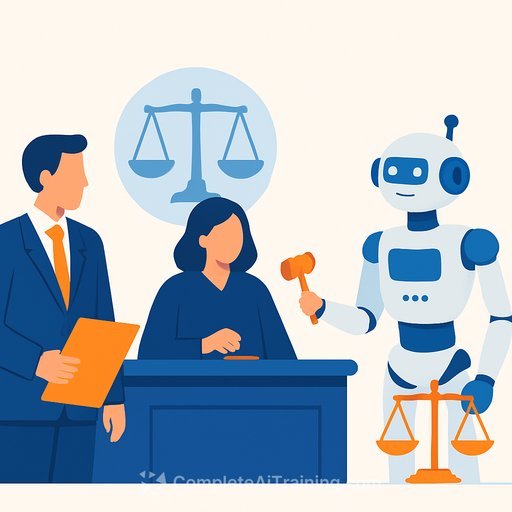Litig's AI Transparency Charter: A practical path for responsible AI in legal work
Litig has introduced an AI Transparency Charter aimed at making AI use in legal matters clearer, safer, and easier to govern. The goal is simple: build client trust while reducing ethical and operational risk.
If you're leading a firm, an in-house team, or a practice group, this sets a baseline. It turns vague AI policies into concrete commitments you can actually implement.
Why transparency is now non-negotiable
Clients expect to know when and how AI is used on their matters-especially where confidentiality, privilege, and billing are on the line. Clear disclosure prevents misunderstandings and strengthens engagement terms.
Regulators and professional bodies are also moving in this direction. See the ABA's Formal Opinion 512 on lawyers using generative AI and the NIST AI Risk Management Framework for helpful benchmarks.
What the Charter emphasizes
- Client disclosure: Tell clients when AI is used, where, and why-before it impacts their matter.
- Confidentiality and privilege: Keep sensitive data out of public tools; use approved environments and standard contractual clauses.
- Human oversight: Lawyers remain accountable; AI outputs are reviewed before use or filing.
- Accuracy and bias testing: Validate outputs, track known failure modes, and spot-check high-risk tasks.
- Auditability: Maintain logs of prompts, sources, versions, and human approvals.
- Vendor due diligence: Assess AI providers for security, data retention, IP terms, and model behavior.
- Explainability: Provide reasoning or sources where feasible, especially for advice and dispute work.
- Billing transparency: No double billing; separate human review time from automation.
- Training and competence: Ongoing skills development and model-use guidelines for staff.
- Incident handling: Clear escalation for data leaks, model drift, or material output errors.
How firms and legal teams can adopt this-fast
- Map current AI use: Matter types, tools, data flows, and high-risk points (e.g., client data in prompts).
- Add a disclosure clause: Update engagement letters and outside counsel guidelines to cover AI use and consent.
- Create a review gate: Require human approval for filings, advice, citations, and client communications.
- Lock down data: Disable training on firm data, use enterprise licenses, and sanitize prompts.
- Standardize prompts: Maintain matter-specific prompt libraries with validation notes.
- Test and log: Red-team for hallucinations, bias, and leakage; keep audit trails.
- Clarify billing: Define what's billable, what's automated, and how review time is recorded.
- Set vendor rules: DPIAs, SOC 2/ISO attestations, retention limits, and IP indemnities.
Sample language for engagement letters
- "Our team may use approved AI tools under human supervision to improve speed and consistency. We do not input your confidential information into public systems."
- "AI-assisted work is reviewed by qualified lawyers. We disclose material AI use affecting your matter and will obtain your consent where required."
- "Automation time is not billed. Lawyer review, judgment, and customization are billed according to our standard terms."
30-60-90 day rollout
- 30 days: Inventory tools and use cases, publish a short AI policy, add a disclosure clause, enable logging.
- 60 days: Implement approval workflows, vendor due diligence, and red-team tests for priority matters.
- 90 days: Train teams, refine billing practices, and report adoption/incident metrics to leadership.
Metrics that matter
- Percentage of AI-assisted work with documented human review
- Number of matters with client AI disclosure recorded
- Output error rates (by matter type) and time to remediation
- Vendor assessments completed and re-assessed quarterly
Training and capability building
The charter only works if lawyers know how to use AI safely and effectively. Build short, focused training around disclosure, review standards, data handling, and prompt practices.
If you need structured options, see these resources for curated programs: AI courses by job role.
Bottom line
AI can speed up routine tasks, but trust wins matters. The AI Transparency Charter gives legal teams a clear playbook: disclose, supervise, document, and train. Do that consistently, and you reduce risk while keeping clients fully informed.
Your membership also unlocks:






